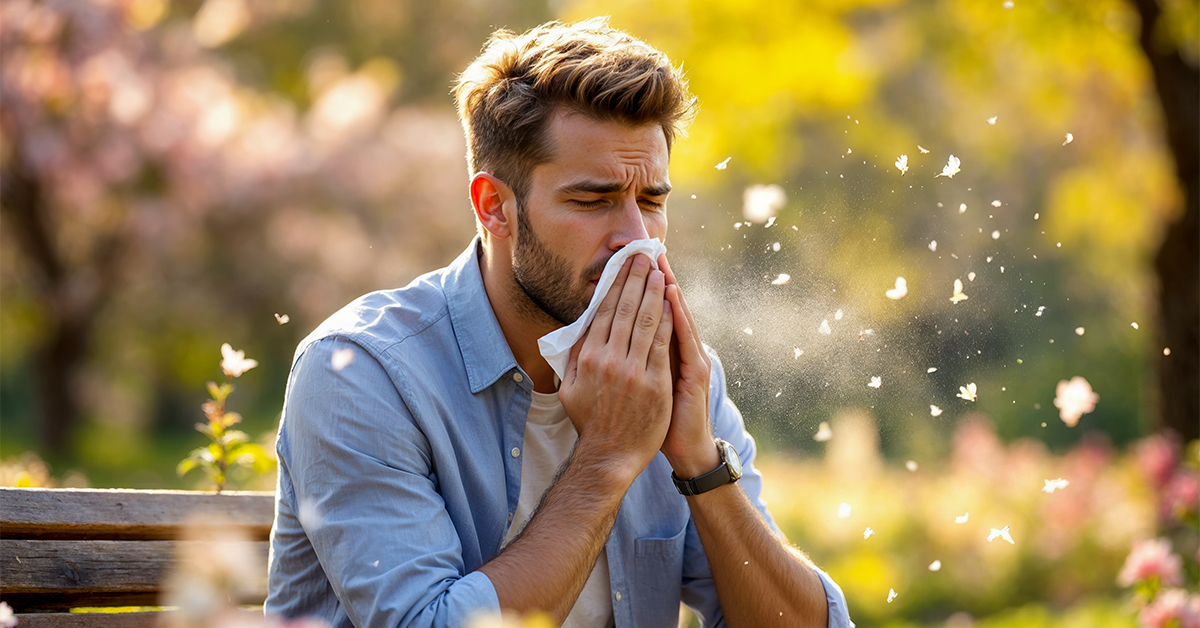If you’ve got allergies, maybe you’ve tried any number of antihistamines or nasal sprays for your runny nose, itchy eyes and endless sneezing. Over-the-counter remedies are designed to provide temporary relief from symptoms. None, however, addresses the actual source of your allergies.
Getting to the source of allergy symptoms
The only clinically proven method to get to the source of your symptoms, providing significant, long-term relief, is called allergen immunotherapy. Immunotherapy treatments address the underlying cause of an allergic reaction by helping the body develop immune tolerance to specific allergens. This is done by introducing and gradually increasing particular allergens in the body, desensitizing it to antigens over time.
Allergen immunotherapy is delivered in two ways, through shots (subcutaneous injection immunotherapy), or through drops (sublingual immunotherapy). Allergy shots were introduced over 100 years ago and are a very effective way of treating chronic allergies, often with a 60-70% reduction in allergy symptoms.
Allergy drops use the same FDA-approved antigens as allergy shots but deliver them in a liquid form under the tongue to highly specialized cells. Drops are given in gradually increasing doses until the body develops a tolerance to the allergy-causing substance. Just as with allergy shots, allergy drops train your body not to react, or to react less severely, to an allergen by regularly exposing you to small amounts of the allergen over time.
Benefits of allergy drops
While both treatments offer long-term desensitization to allergens, the sublingual approach has its advantages.
- Drops are pain-free.
Drops eliminate any potential discomfort from injections. - Drops are easy and convenient.
Drops can be self-administered from home, eliminating the need for frequent visits to the doctor’s office. - Drops are safe.
Studies show drops are safe and effective, and because they enter the body’s bloodstream slower than shots, they have been shown to have even fewer side effects than allergy shots. - Drops are doable.
With fewer hurdles and inconveniences, patients are much more likely to complete their course of treatment compared to those who receive shots. - Drops are kid-friendly.
Allergy drops can also be administered to children as young as four years old.
Three phases of allergy drop treatment
Allergy drops are a long-term treatment therapy. For most patients, drops should be taken three times each day for 3-5 years. Here’s what you can expect over the course of a typical treatment plan.
- Phase 1
Initial Oral Tolerance (0-3 months)
As your body adjusts to the treatment, you may notice small changes in your symptoms as tolerance begins to build. - Phase 2
Symptom Relief (3 months-2 years)
As the treatment continues and tolerance continues to build, you’ll notice your symptoms begin to decrease. - Phase 3
Long-term Tolerance (2-5 years)
The body will have developed a tolerance, and your symptoms and their intensity, further decrease. Relief usually lasts several years, but a small percentage of patients report indefinite improvement.
While most insurance plans cover the cost of allergy shots, not all policies cover allergy drops. Check with your plan to see if they will cover this type of allergy treatment. For many, the benefits of allergy drops outweigh the costs.
Welia Health’s allergy specialist, Matthew Patterson, MD, can help you find the source of your suffering and put an end to it, not just treat the symptoms. To learn more, call 1.800.245.5671 or 320.679.1313.
A referral from your primary care provider may be required. Please check with your insurance carrier.




